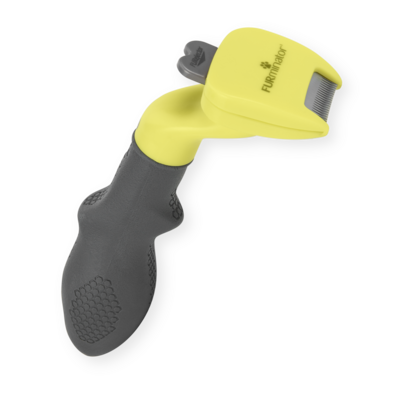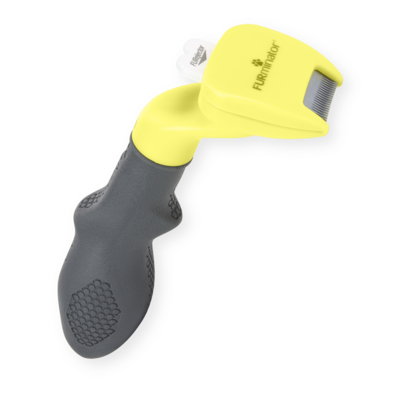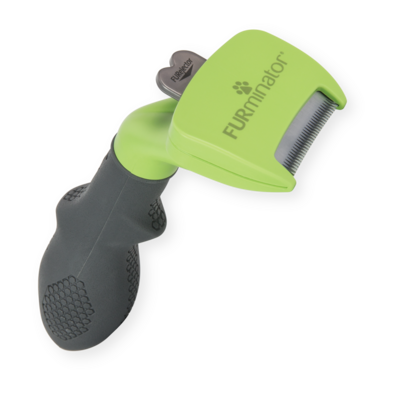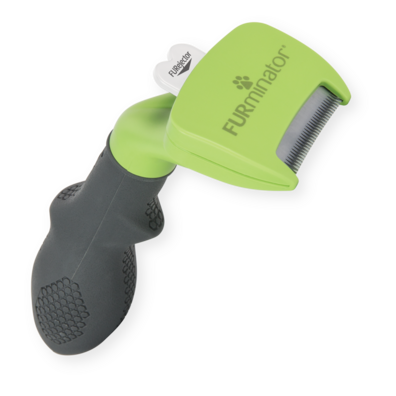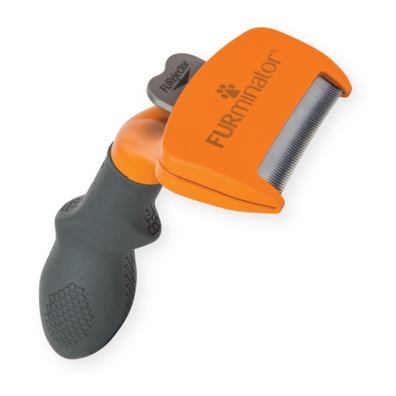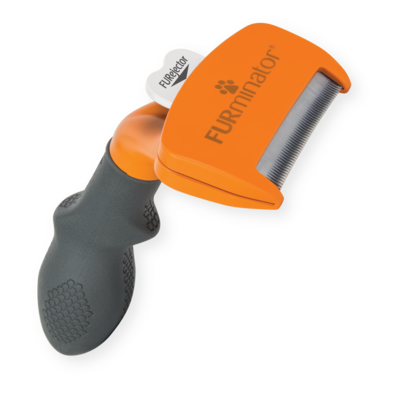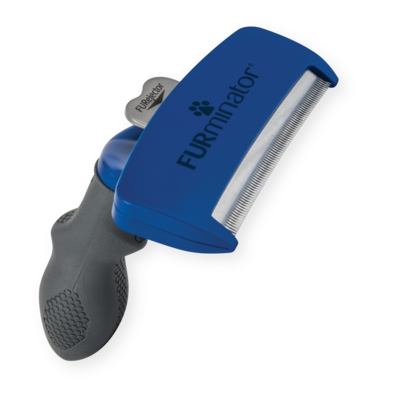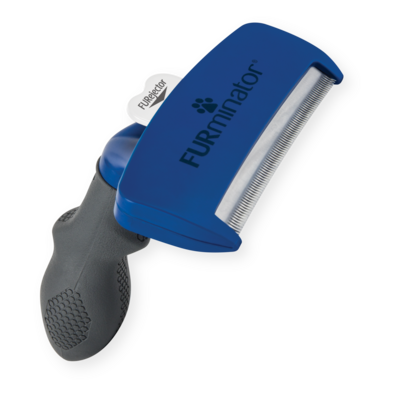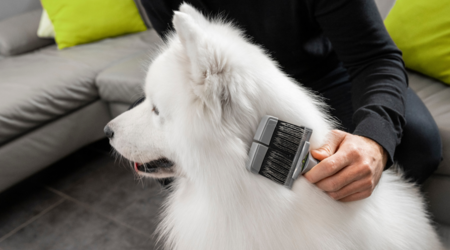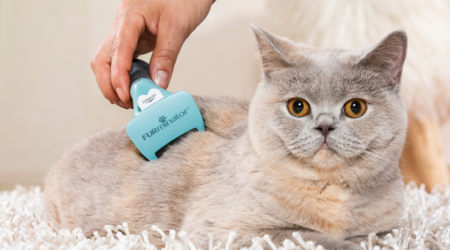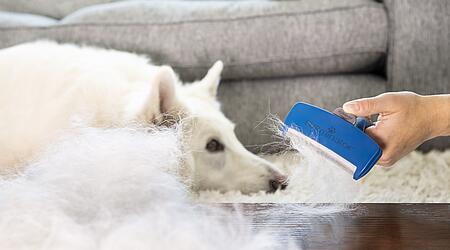Which dog breeds are recommended for a deShedding tool?
Some breeds have coat textures that vary between individual dogs. These breeds are noted with an asterisk(*). Not all dogs in these breeds shed. If your dog sheds, the FURminator deShedding Tool will work on your dog.
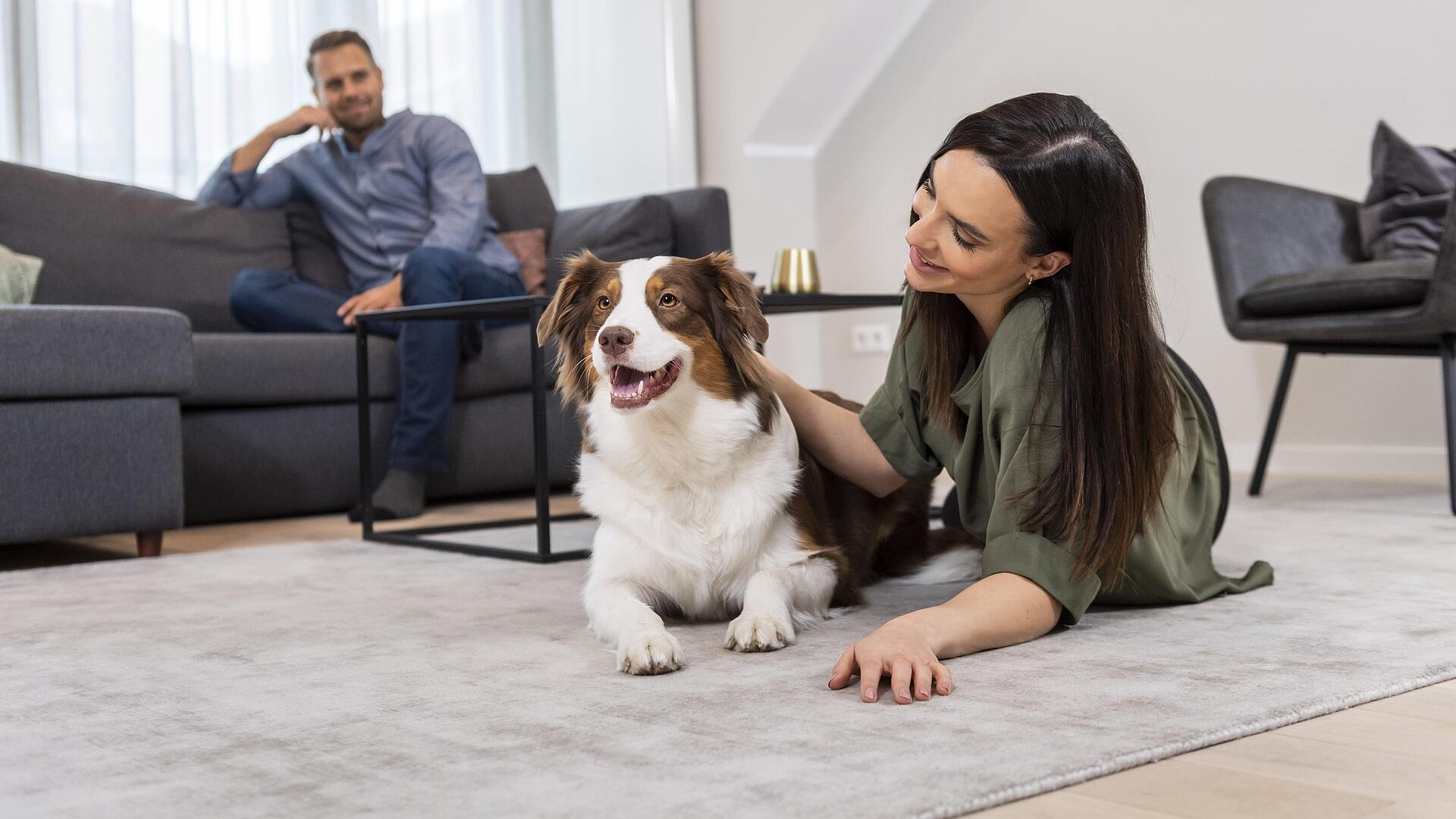
Breeds A-Z
Affenpinscher
Afghan Hound
Airedale Terrier
Akita
Alaskan Klee Kai
Alaskan Malamute
American Bulldog*
American Eskimo Dog
American Pit Bull Terrier*
American Staffordshire Terrier
Anatolian Shepherd
Australian Cattle Dog
Australian Kelpie
Australian Shepherd Dog
Australian Terrier
Balkan Hound
Basenji
Basset Hound
Beagle*
Bearded Collie
Belgian Griffon
Belgian Malinois
Belgian Shepherd
Belgian Tervueren
Bernese Mountain Dog
Black and Tan Coonhound*
Black Russian Terrier
Bloodhound
Blue Heeler
Border Collie
Border Terrier
Boston Terrier*
Bouvier des Flandres
Boxer*
Borzoi
Briard
Brittany Spaniel
Brussels Griffon
Bull Terrier*
Bullmastiff
Cairn Terrier
Canaan Dog
Cane Corso
Cardigan Welsh Corgi
Catahula Leopard Dog
Cavalier King Charles Spaniel
Chesapeake Bay Retriever
Chihuahua*
Chinook
Chow Chow
Clumber Spaniel
Cocker Spaniel
Collie
Dachshund*
Dalmatian*
Deerhound
Doberman Pinscher*
English Bulldog*
English Foxhound*
English Mastiff
English Setter
English Springer Spaniel
English Toy Spaniel
Eskimo Dog
Field Spaniel
Finnish Spitz
Flat-Coated Retriever
French Bulldog*
French Mastiff
German Shepherd
German Shorthaired Pointer*
German Wirehaired Pointer
Giant Schnauzer
Glen of Imaal Terrier
Golden Retriever
Gordon Setter
Great Dane
Great Pyrenees
Greater Swiss Mountain
Greyhound
Harrier Beagle
Ibizan Hound*
Irish Setter
Irish Terrier
Irish Wolfhound
Italian Greyhound*
Jack Russell Terrier
Japanese Chin*
Japanese Spitz
Kai Dog
Keeshond
Kuvasz
Labrador Retriever
Lakeland Terrier
Leonberger
Lhasa Apso*
Manchester Terrier
Miniature Bull Terrier
Miniature Pinscher
Miniature Schnauzer
Munsterlander
Neapolitan Mastiff
Newfoundland
Norfolk Terrier
Norwegian Elkhound
Norwich Terrier
Nova Scotia Duck-Tolling Retriever
Old English Sheepdog
Otterhound
Papillion
Parson Jack Russell Terrier
Pekingese*
Pembroke Welsh Corgi
Petit Basset Griffon Vandéen
Pharaoh Hound*
Polish Lowland Sheepdog
Pomeranian
Pug
Rat Terrier
Rhodesian Ridgeback
Rottweiler
Saint Bernard
Saluki
Samoyed
Schipperke
Scottish Deerhound
Scottish Terrier
Sealyham Terrier
Shar Pei*
Shetland Sheepdog
Shiba Inu
Shih Tzu*
Siberian Husky
Silky Terrier*
Skye Terrier
Spinone Italian
Smooth Fox Terrier*
Staffordshire Bull Terrier*
Standard Schnauzer
Sussex Spaniel
Tibetan Mastiff
Tibetan Spaniel
Toy Fox Terrier*
Tibetan Terrier
Vizsla
Weimaraner
Welsh Springer Spaniel
Welsh Terrier
West Highland White Terrier
Whippet
Wire Fox Terrier
Wirehaired Pointing Griffon
If your dog breed is not listed above, please check the breeds that we do not recommend for using a deShedding tool.
What is an undercoat?
Undercoat is a dense, fluffy layer of fur that protects many dogs from the cold. Together with the top coat, it forms the ‘double coat’ and helps to regulate body temperature. While it protects against the cold in winter, it also ensures that dogs do not overheat in hot weather and that moisture is repelled. The dense structure of the undercoat makes it an indispensable part of coat care, which should not be forgotten for dogs with this type of coat.
Why is it important to remove loose undercoat?
Removing loose undercoat is an essential part of coat care for dogs with double-layered coats. If loose undercoat is not removed regularly, this can lead to matting, which disrupts the ventilation of the skin and makes it more difficult to detect parasite infestation.
A well-groomed undercoat is particularly important in summer as it supports natural air circulation and helps your dog to regulate its body temperature. Regular grooming – for example with a special brush or comb for dogs with undercoat such as the FURminator® Undercoat deShedding-Tool– not only contributes to a healthy coat, but also significantly improves the well-being of your four-legged friend.
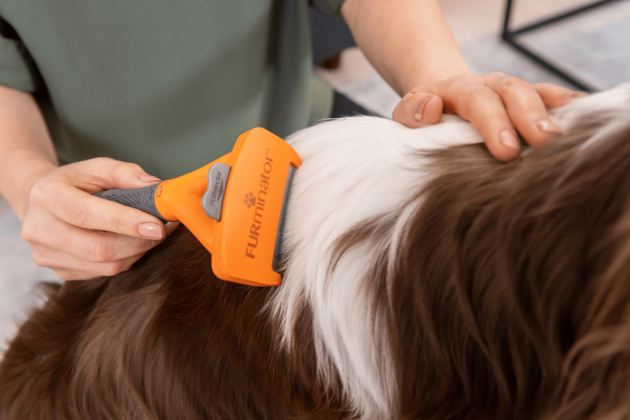
How do you remove loose dog undercoat correctly?
The right tool can remove loose undercoat effectively and gently. The FURminator is particularly suitable as it removes loose undercoat without damaging the top coat. It is important to match the tool to your dog's coat type, as there are different models for long-haired and short-haired dogs.
Tips for correct use:
- For long coats: part the coat and brush in sections from root to tip. This will give you thorough results without the brush getting stuck.
- Coat spray: A nourishing spray makes the coat supple and makes brushing easier – especially for sensitive dogs.
- Prepare the top coat: For long-haired or wire-haired dogs, brush the top coat first to prevent undercoat from getting caught in it.
You should take particular care with sensitive areas such as the back, flanks, hanging ears, neck, chest and loin area. Regular grooming ensures that your dog not only looks well-groomed, but also feels comfortable.
Conclusion:
Well-groomed undercoat - a must for your dog's well-being
Undercoat care is an essential part of dog grooming for breeds with double-layered coats. With a suitable tool such as the FURminator, you can effectively remove loose undercoat and thus prevent matting and skin problems. Regular brushing makes it easier to detect parasites or skin changes caused by them. Especially in summer, a well-groomed undercoat supports natural air circulation, which makes it much easier for your dog to regulate its temperature.
Regular grooming not only improves the health and appearance of the coat, but also contributes to your dog's well-being. Remember that every coat care programme should be tailored to the individual needs of your four-legged friend. This will keep your dog healthy and happy!

